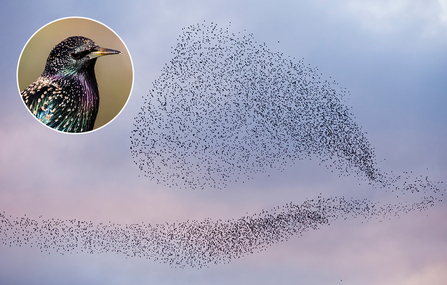The starling is a familiar garden visitor that has a beautiful purple-and-green sheen to its black feathers. They're smaller than blackbirds and have a distinctive domed head which can help to differentiate them from other birds. In winter, their feathers develop a silver spot, giving them an eye-catching look.
Starlings live in large social groups and can often be seen pulling up worms in parkland or gardens. They're regular visitors at bird feeders too. In the winter, the UK's starling population grows as many birds arrive in the country from colder parts of Europe. This, along with earlier sunsets in the winter, can lead to spectacular murmurations at dusk.


